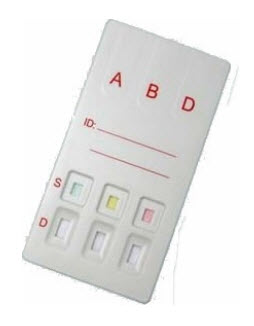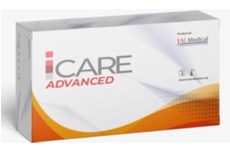Table of Contents
The field of blood typing, particularly in understanding the ABO and RhD systems, has undergone significant advancements with the emergence of innovative technologies. In this article, we’ll explore the latest trends in ABO and RhD blood typing, focusing on the exciting developments in rapid test development that are shaping the future of blood typing.
1. Introduction to ABO and RhD Blood Typing Trends
Blood typing has always been a critical aspect of healthcare, influencing various medical procedures. With the introduction of emerging trends and innovative technologies, the landscape of ABO and RhD blood typing is evolving rapidly. One of the key areas witnessing transformative changes is the development of rapid tests.
2. Advancements in Molecular Techniques
Traditional blood typing methods have relied on serological techniques, but molecular techniques are gaining prominence. Polymerase Chain Reaction (PCR) based methods, for instance, provide a more detailed and accurate analysis of blood types. These advancements enhance the precision of ABO and RhD blood typing, reducing the chances of errors associated with traditional methods.
3. Microfluidic Technologies for Rapid Testing
Microfluidic technologies represent a breakthrough in rapid testing. These devices, often referred to as “lab-on-a-chip,” enable the manipulation of small volumes of fluids with high precision. In the context of ABO and RhD blood typing, microfluidic devices offer the potential for quick, automated, and accurate blood typing results, making them highly promising for future applications.
4. Point-of-Care Testing for Immediate Results
The emphasis on point-of-care testing is a notable trend in blood typing innovations. Point-of-care tests, including ABO RhD blood test, are designed to deliver immediate results, allowing healthcare professionals to make timely decisions. These tests are particularly valuable in emergency situations, where swift blood typing is critical for patient care.
5. Integration of Artificial Intelligence (AI)
Artificial Intelligence is making inroads into healthcare, and blood typing is no exception. AI algorithms are being integrated into the analysis of blood typing results, improving the accuracy of interpretations. This not only enhances the reliability of blood typing but also streamlines the entire process, making it more efficient.

6. Enhanced Blood Group Genotyping
Blood group genotyping is becoming more sophisticated, providing comprehensive information about an individual’s blood type. This allows for a more nuanced understanding of blood type variations and ensures that healthcare professionals can make informed decisions based on detailed genetic insights.
7. Customized Solutions for Rare Blood Types
In the quest for more personalized healthcare, there’s a growing focus on developing customized solutions for individuals with rare blood types. Innovations in rapid testing technologies aim to address the challenges associated with rare blood types, ensuring that individuals with unique blood characteristics receive accurate and timely blood typing results.
8. Remote Blood Typing Solutions
Telemedicine and remote healthcare have become integral parts of modern healthcare systems. Innovations in blood typing include the development of remote solutions that enable individuals to conduct blood typing tests at home. This not only enhances accessibility but also contributes to proactive healthcare management.

Conclusion: Shaping the Future of Blood Typing
The trends in ABO and RhD blood typing highlight a future where precision, speed, and accessibility will be paramount. The integration of molecular techniques, microfluidic technologies, AI, and the focus on personalized solutions are collectively shaping a new era in blood typing.
As rapid test development continues to evolve, the potential for transformative impacts on patient care, particularly in emergency situations and personalized treatment plans, is immense. The innovations in blood typing technologies underscore the commitment of the healthcare industry to advancing diagnostic capabilities for the benefit of individuals worldwide.
Frequently Asked Questions About ABO and RhD Blood Typing
Q1: How do molecular techniques enhance ABO and RhD blood typing accuracy?
Molecular techniques, such as PCR-based methods, provide a more detailed and accurate analysis of blood types, reducing the chances of errors associated with traditional methods.
Q2: What is the significance of microfluidic technologies in blood typing?
Microfluidic technologies enable quick, automated, and accurate blood typing results, making them highly promising for future applications.
Q3: How does point-of-care testing contribute to ABO and RhD blood typing?
Point-of-care tests, including ABO and RhD rapid tests, deliver immediate results, allowing healthcare professionals to make timely decisions, especially in emergency situations.
Q4: How is AI integrated into blood typing analysis?
AI algorithms are integrated into the analysis of blood typing results, improving accuracy and streamlining the entire process for more efficient outcomes.
Q5: What are the key trends in blood typing innovations for rare blood types?
Innovations focus on developing customized solutions for individuals with rare blood types, ensuring accurate and timely blood typing results for unique blood characteristics.

